We have shed light on a great deal of ancient symbols here in symbols and meanings section of Mythologian. Now it is time for the next part of that journey to begin. Here is our detailed post about Wiccan symbols and their meanings.
Hollywood is responsible for a great many misconceptions, and their skewed misrepresentation of Wicca and Wiccans is perhaps one of the most egregious of them all. Beliefs that predate most ‘modern’ religions have been vilified to the point that positive, empowering symbols are looked upon with fear and suspicion.
Here are some of the most powerful Wiccan symbols, some common, others not so. The odds are that you have seen some of them many times before, but have never been given the opportunity to understand their true meanings.
Table of Contents
Wiccan Pentagram and Pentacle
We begin with the pentagram and pentacle because they are by far the most easily-recognizable Wiccan symbol, and one most commonly associated with the practice of the religion.
It can be said that the pentagram and pentacle are equivalent to the Cross and the Star of David in Christianity and Judaism respectively.
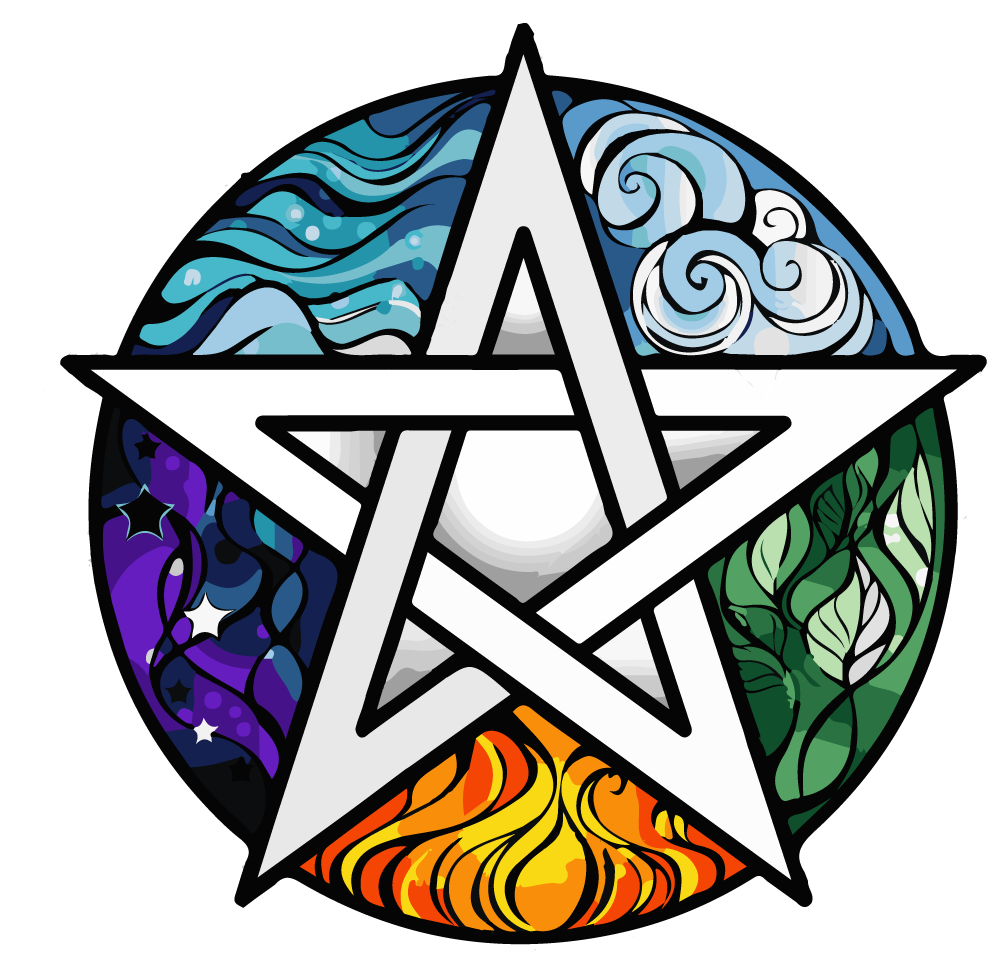
The pentagram is a five-pointed star and the pentacle is the pentagram depicted within a circle with the five points touching its circumference.
Both shapes are usually drawn with a regular pentagram, meaning that each of the star’s five arms is at the same angle from its immediate neighbors. However, irregular pentagrams are not uncommon either.
The most common – and perhaps the most obvious – variation we see with pentacles and pentagrams is whether the star is shown with a single point at the top or flipped vertically to have that point on the bottom.
In true Wicca, the five points represent the five elements: earth, air, fire, water and spirit. The upward-pointing star is a representation of the triumph of the spirit over matter and earthly desires.
The transposed star symbolizes personal gratification over spiritual ones.
It is arguably the Church of Satan’s use of the latter version, with a goat’s head overlaid on the original shape that has fueled so much misunderstanding. They have also copyrighted that image.
Hecate’s Wheel (Strophalos of Hekate)
Hecate (hek-a-tee) was the Greek goddess of magic, witchcraft, necromancy, ghosts, crossroads and entrance ways. She is often depicted as a woman with three aspects wearing a crown with long, protruding spikes (similar to that of the Statue of Liberty).
Hecate’s Wheel has at its center a 6-sided spiral within a circle. Surrounding the circle is a larger circle whose circumference branches of into three spokes.
Each of those spokes then branch off into arcs that ring the central design but do not touch each other.
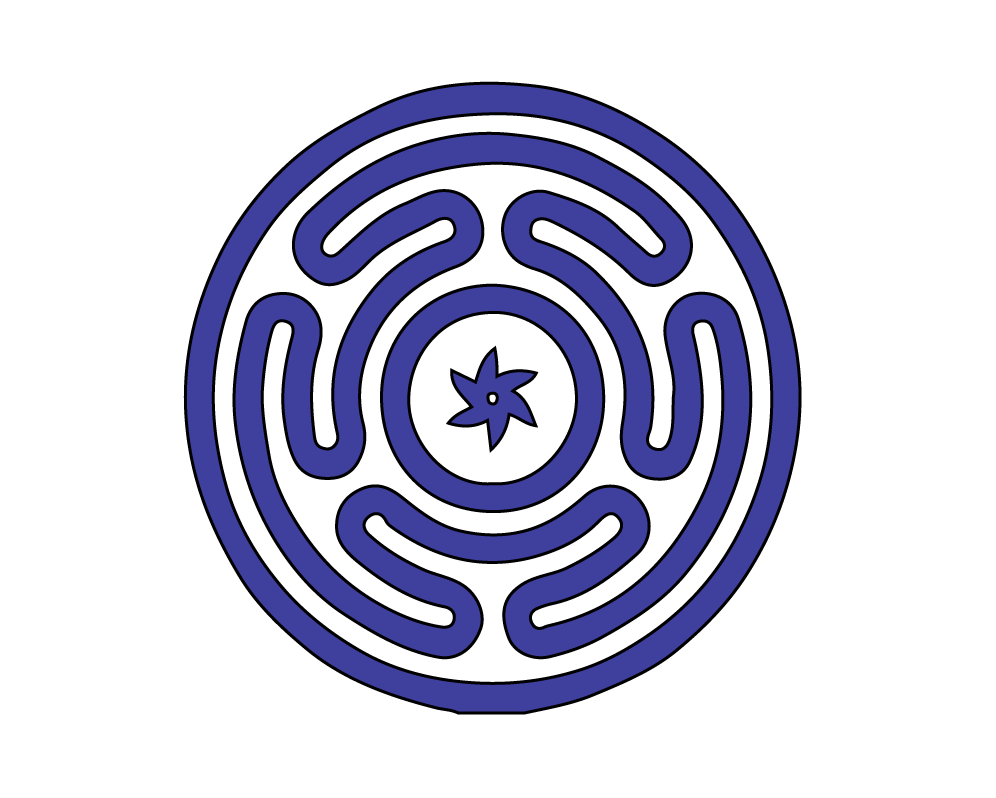
The Strophalos is a symbol of identification but its true meanings remain clouded in mystery.
According to the Chaldean Oracles, a two-millennia-old Alexandrian text, the three-spoked shape surrounding the spiral symbolizes a labyrinthine serpent. The serpent was a representation of rebirth.
The spiral in the center is an ‘Iynx’ (plural Iynges), a picturisation of the force that is said to bind Man to the Father (God). Iynges are said to be the channels on which the celestial world communicates with the material one, or act as couriers between gods and men.
Hecate is sometimes referred to as the ‘Queen of Witches’ for her role as patron of magical craft and control of the unseen world.
The Wheel is an homage to her, but also references the male personification of God at its center for an enigmatic coming together of both aspects of the divine.
Triquetra (Trinity Knot)
Triquetra is a Latin word that means three-cornered. The first triquetras that we know of were those found on ancient Indian sites dating back over five millennia. However, they have also been found as far away as the Scandinavian countries.
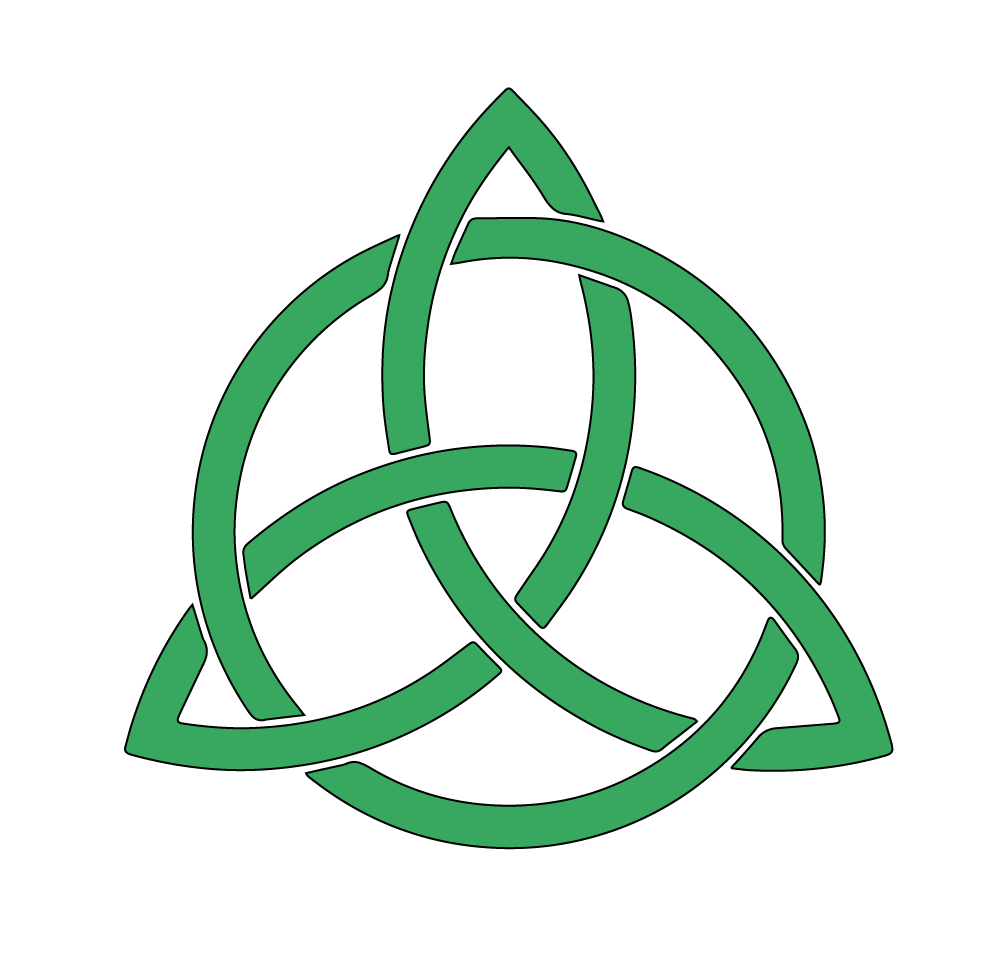
Today, the design is most commonly associated with the Celts, where it first emerged in their art approximately 1,400 years ago.
The fact that the Trinity Knot has a place in such a diverse range of cultures almost necessarily hints at the fact that it means many things to many people.
In Wiccan tradition, it has come to symbolize the three roles that the Goddess takes in our lives, as mother, maiden and crone.
The mother is symbol of nurturing love, of creation and the cycle of Life. The maiden represents beauty and fertility, and also innocence.
The trait of wisdom is personified by the crone. It is believed that the interlocking design is a testament of how each role merges into the other and ties to the eternal nature of Life and the soul.
Others see the three points as depictions of the three essential elements of nature as envisioned by ancient pagans – earth, water and fire.
The Celts’ interpretation of the triplicate design was as the three domains: land, sea and sky.
Athame (Dagger)
An athame (er-thay-may) is a ceremonial dagger, usually with a black handle. Blades are a common feature in many Wiccan rituals and ceremonies and the athame is used primarily as a metaphorical symbol of killing the old and the unwanted (referring mainly to emotions and unpleasant memories) or as a cleaving of what is to be left behind.
The athame is usually represented with its blade pointing upwards and is thus associated with the elements of air and fire, whose representations are upward-facing triangles.
Athames used for rituals have to be consecrated before they can be used in Wiccan rituals. In earlier times, they were single-edged because practitioners of the craft used them for associated activities like the shaping of candles.
Today, since most objects for ritual use like candles are readily available, athames may also be double-edged. However, Wiccans may still blunt the edges and the point as a precautionary measure.
It is a common mistake to confuse the athame with the ‘boline’. A boline is used for actual cutting of ingredients and twine and rope to be used for rituals; inscriptions are usually carved with bolines and they usually come with a white handle.
The ‘Casting of the Circle’, the ritual drawing of the boundary of a magic circle (usually 9 feet in diameter), may be done using an athame.
Witch’s Knot (Witch’s Charm)
The Witch’s Knot is another common Wiccan symbol, and as is often the case with the most common symbols, the interpretation of its meanings have diverged significantly from its original purpose.
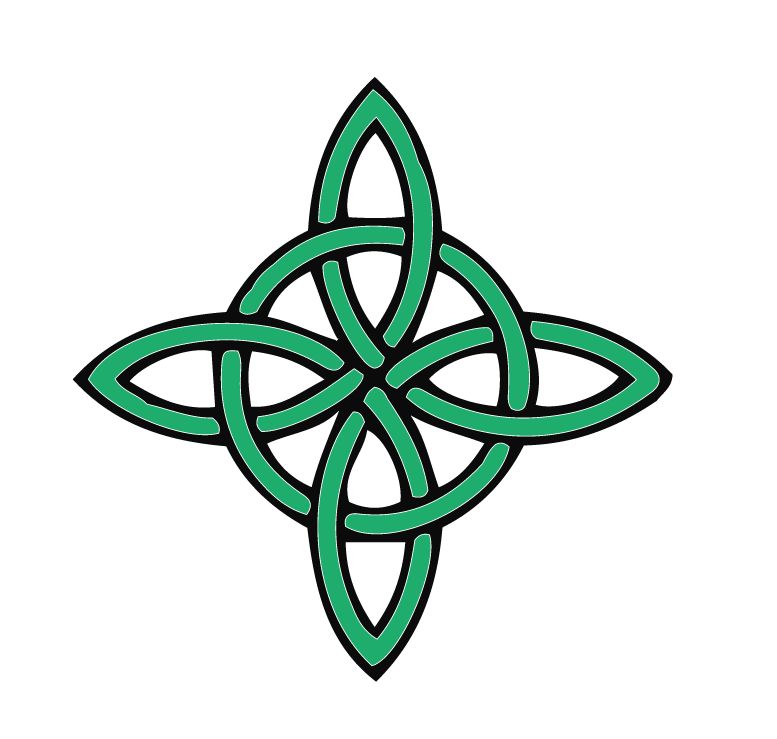
The oldest explanations of its use describe The Witch’s Charm as a symbol of protection against malevolent witchcraft. A key aspect to its power was the unending design that revealed no beginning or end.
The four loops were designed to point in all four cardinal directions so that they protected the occupants from evil intent from every point of approach. Hence the reason why The Witch’s Knot is considered as one of the prominent Wiccan protection symbols.
When created, it is recommended that a Witch’s Knot is drawn in a single, continuous process without breaks (a unicursal). This enhances the efficacy of the intention behind its existence and the power of the magic.
The Witch’s Knot was often inscribed above doorways of homes and stables. The four pisces are often said to represent the female ‘yoni’ but the number ‘three’ is more closely associated with the divine feminine (as we see with the Triquetra) while four is more closely aligned with the male force.
The circle in the center is meant to denote eternity and the circle of Life itself.
Hexagram (Unicursal)
In symbology, the hexagram is most commonly represented as two interlocking triangles as in the Star of David in Jewish tradition. The unicursal (can be drawn in a single line) hexagram is a more complicated figure, and is the six-sided shape more common to Wiccan tradition.
There are two main vertices, one pointing above and the other below, and four secondary vertices, two on either side.
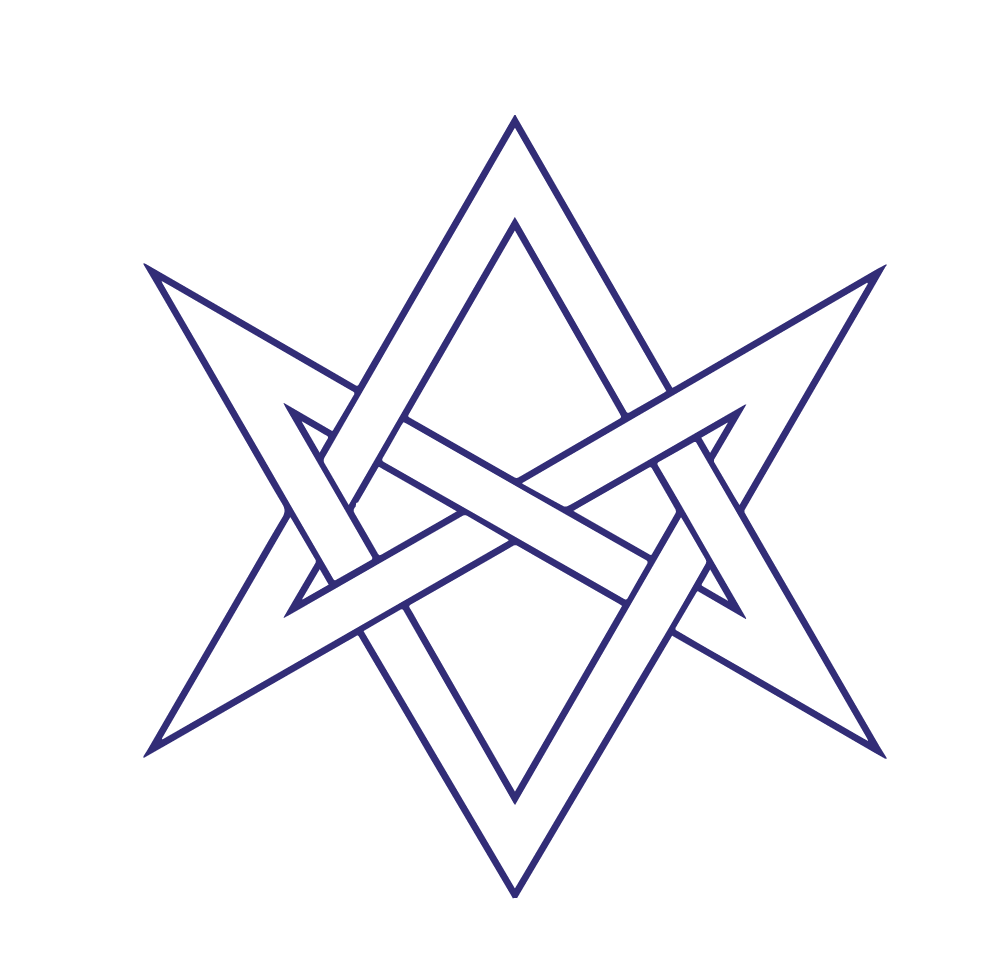
The topmost vertex is said to be representative of the Divine or the divine plane, while the downward-pointing vertex is commonly believed to symbolize Man or the earthly realm.
The unicursal hexagram is basically two letter ‘Z’s, one drawn normally and the other as a mirror reflection superimposed so their two edges touch. There is very little material available that actually explains how the shape was designed apart from that it was used by the Hermetic Order of the Golden Dawn.
The Rose Cross of the Golden Dawn organization exhibits the same mysterious four triangles emerging from its center like the unicursal hexagram.
Crescent Moon
For Wiccans, the Moon is not just a symbol; she is a Goddess in her own right. The moon probably came to be so closely associated with the divine feminine because of the periodicity it shared with the female menstrual cycle.
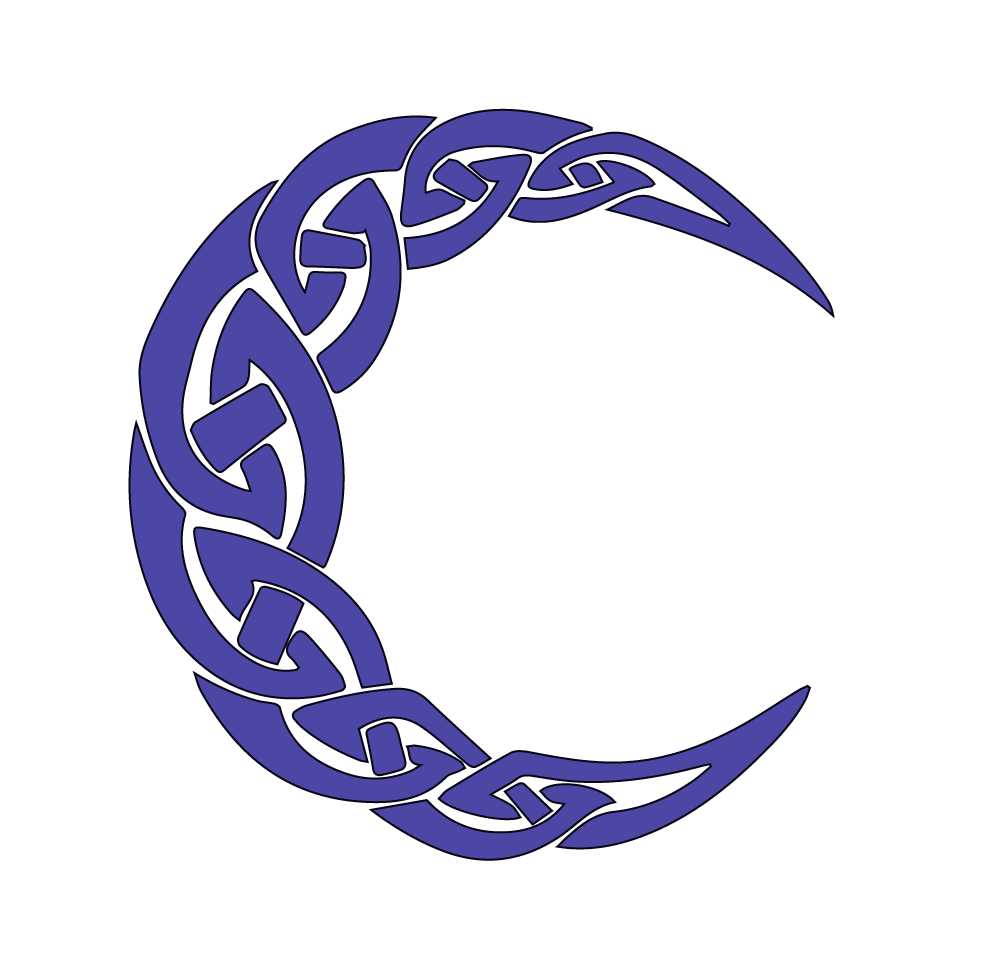 Most crescent moon symbols show the waxing moon, a representation of new beginnings, growth and creativity.
Most crescent moon symbols show the waxing moon, a representation of new beginnings, growth and creativity.
In Wiccan female symbolism, the life of a woman is associated with three stages, that of the mother, maiden and crone. All three stages are depicted in another popular Wiccan symbol, the Triple Moon.
The waxing crescent moon aligns with the maiden at the peak of her existence on earth, fertile and innocent, with her life before her brimming with infinite possibilities.
Very often, we associate femininity with weakness and a need for protection. That was not the case when these symbols gained their power. It was at a time when women were hardy and strong, running their households as wives and mothers, holding the fort alone when menfolk went off to work the fields or were engaged in warfare.
The true spirit of the crescent moon alludes to the powerful feminine, and that is the reason it is popularly adopted by so many practitioners of Wicca today.
Horned God
Where the Triple Moon represents the entirety of female earthly life, the Horned God is the symbol of the male aspect of the Divine. Together, they form the dual aspect of the Wiccan pantheon.
The Horned God is the symbol of virility (how we get our word ‘horny’), strength and the Hunt.
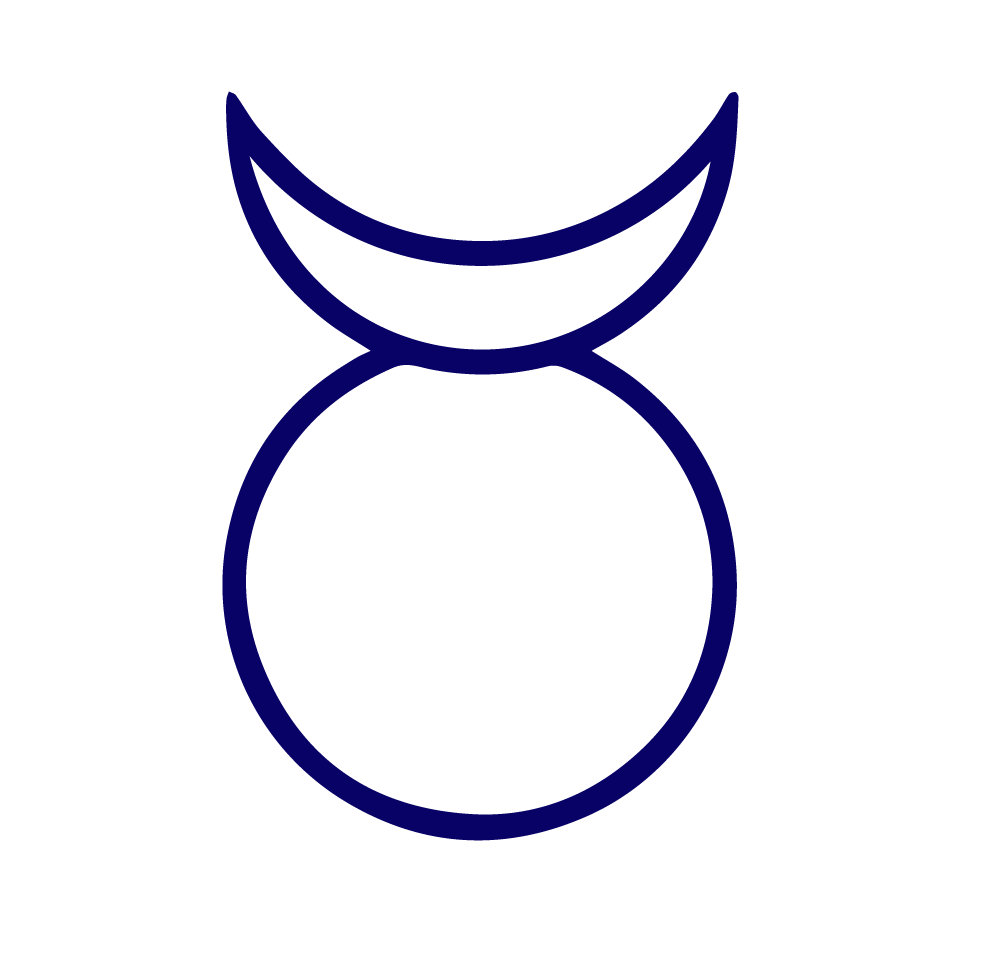
While the original view of Wicca tradition was that the male and female were opposite but equal, the modern interpretation of Wicca places considerably less emphasis on the male facet.
In Wicca, adherents believe that while the Goddess is eternal (through the three-stage cycle of mother, maiden and crone) while the Horned God is born in winter, impregnates the Goddess, then passes on during the autumn months. He is reborn in the coming winter and the cycle repeats itself.
This conforms to a parallel system of belief that ascribes the role of a ‘lesser god’ or an ‘under-god’ to the Horned one. It is said that he is a mediator between the earthly plane and the true God which we are unable and incapable of perceiving or knowing.
Wiccans also see this entity as the Lord of Death. In this capacity, he comforts and consoles those whose life on earth has ended while they wait for the cycle of rebirth to transport them back to the earthly plane.
Cauldron
Besides the witch’s hat, the cauldron is probably the most cartoonishly-depicted of all things Wicca by Hollywood. In true Wicca lore, it is the vessel in which all life floats until it returned to the cycle of rebirth, and is symbolic of the womb of the Goddess.
The use of a vessel to hold something of spiritual or magical value is not limited to Wicca. It is an important aspect of Christian belief in its use as a chalice used in Catholic rituals or with the Holy Grail itself.
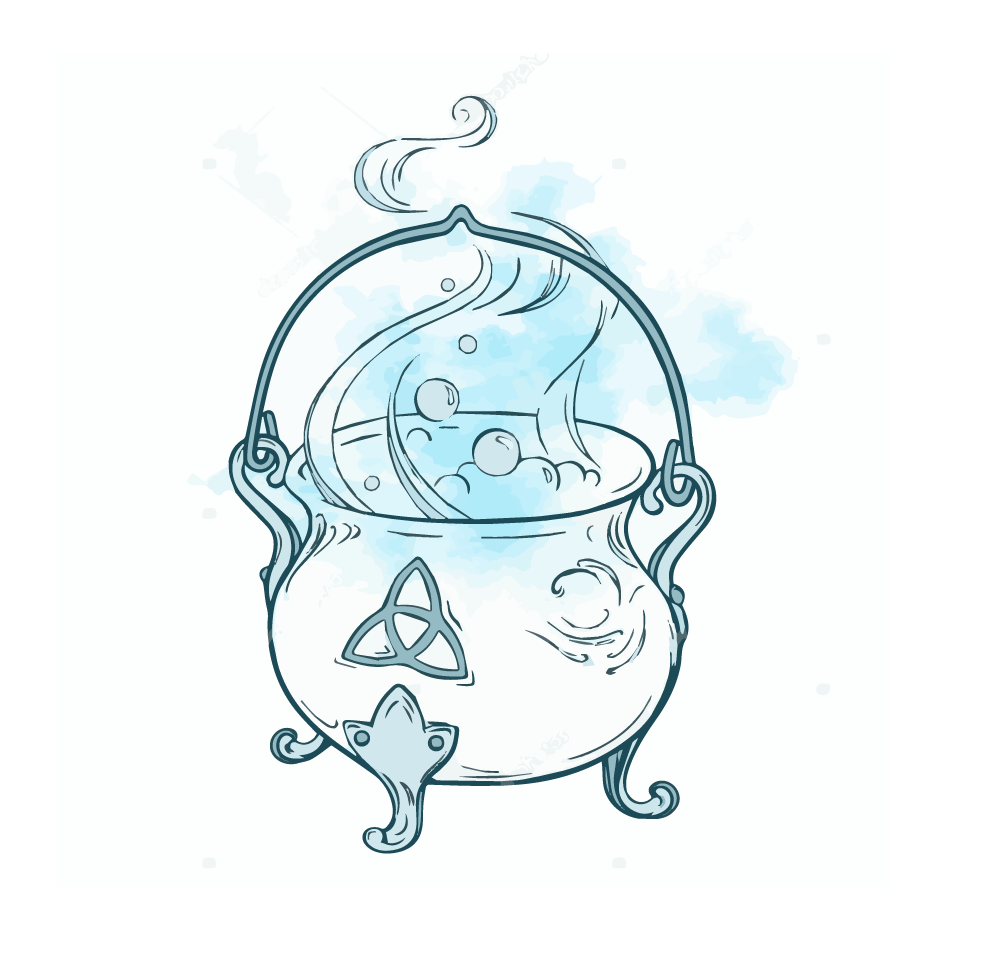
The Wiccan cauldron was a symbol of healing and knowledge for its origins at a time when a medicine woman or shaman would prepare a poultice or a healing concoction within it.
For simple folk in ancient times who had no access nor knowledge of medicine, it would have represented a vessel full of eternal promise, an object through which the gods would bless them with the benevolence of good health or extended life.
In practice today, the cauldron is used to burn items during a ritual, or as a container for brewing spells and potions. It may also be used or scrying, either from the images in seen in the contents of the cauldron or from the steam rising from it.










